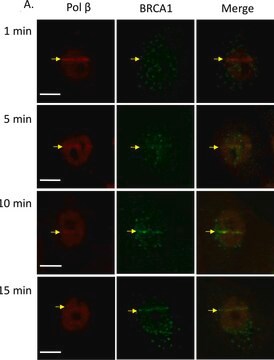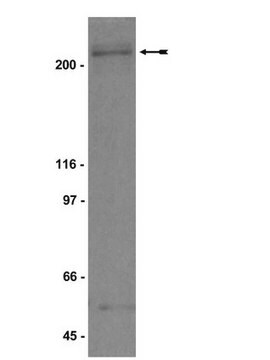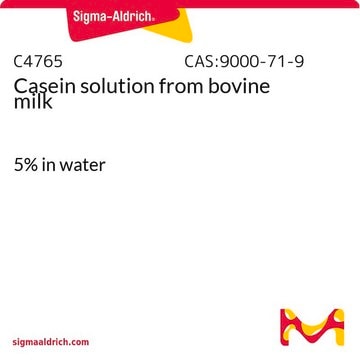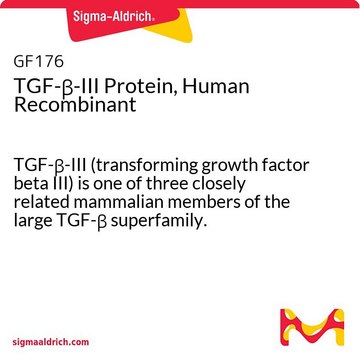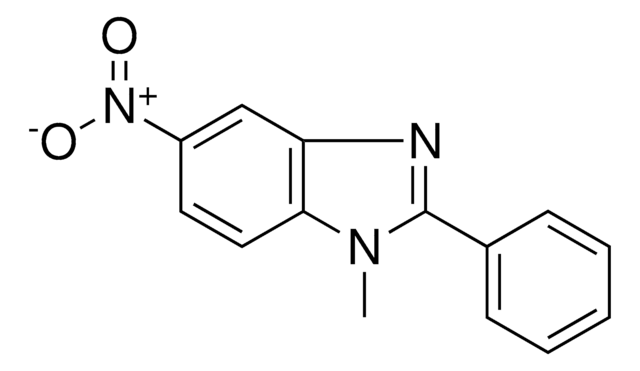14-912-M
TGFBR-1 Protein, active, 10 µg
Active, N-terminal GST-tagged, recombinant, human TGFBR1 amino acids 200–end containing a T204D mutation, expressed by baculovirus in Sf21 insect cells. Purified using glutathione agarose. For use in Kinase Assays.
Synonym(e):
TGF-beta receptor type-1, TGFR-1, Transforming growth factor-beta receptor type I, TGF-beta receptor type I, TbetaR-I, TGF-beta type I receptor, Serine/threonine-protein kinase receptor R4, SKR4, Activin receptor-like kinase 5, ALK-5
About This Item
Empfohlene Produkte
Biologische Quelle
human
Qualitätsniveau
Rekombinant
expressed in baculovirus infected Sf21 cells
Mol-Gew.
Mw 62 kDa
Hersteller/Markenname
Upstate®
Methode(n)
activity assay: suitable (kinase)
NCBI-Hinterlegungsnummer
UniProt-Hinterlegungsnummer
Angaben zum Gen
human ... TGFBR1(7046)
Allgemeine Beschreibung
Anwendung
Entzündung & Immunologie
Biochem./physiol. Wirkung
Verpackung
Qualität
Physikalische Form
Lagerung und Haltbarkeit
Rapidly thaw the vial under cold water and immediately place on ice. Aliquot unused material into pre-chilled microcentrifuge tubes and immediately snap-freeze the vials in liquid nitrogen prior to re-storage at -70°C.
Sonstige Hinweise
Rechtliche Hinweise
Haftungsausschluss
Analysenzertifikate (COA)
Suchen Sie nach Analysenzertifikate (COA), indem Sie die Lot-/Chargennummer des Produkts eingeben. Lot- und Chargennummern sind auf dem Produktetikett hinter den Wörtern ‘Lot’ oder ‘Batch’ (Lot oder Charge) zu finden.
Besitzen Sie dieses Produkt bereits?
In der Dokumentenbibliothek finden Sie die Dokumentation zu den Produkten, die Sie kürzlich erworben haben.
Unser Team von Wissenschaftlern verfügt über Erfahrung in allen Forschungsbereichen einschließlich Life Science, Materialwissenschaften, chemischer Synthese, Chromatographie, Analytik und vielen mehr..
Setzen Sie sich mit dem technischen Dienst in Verbindung.